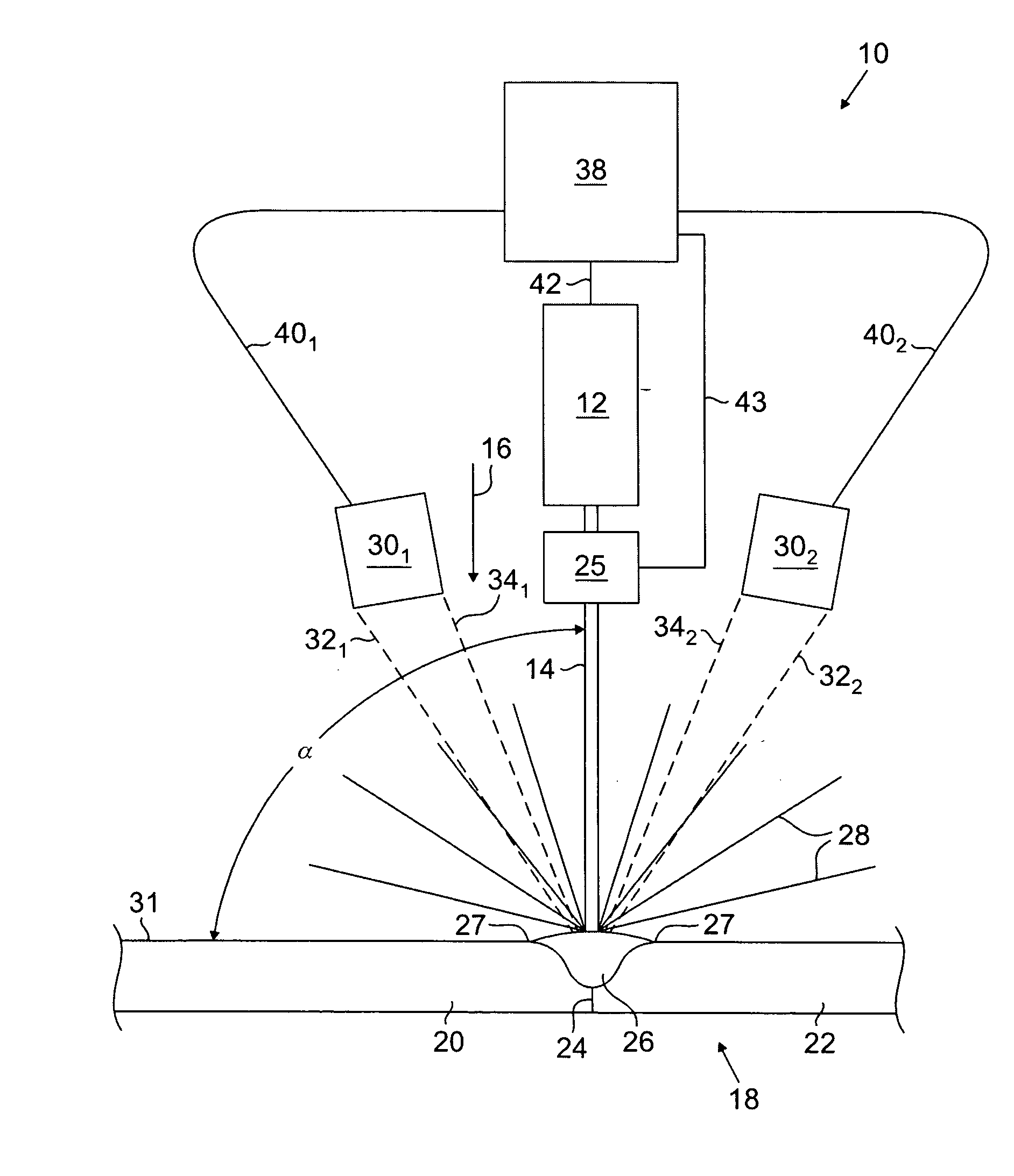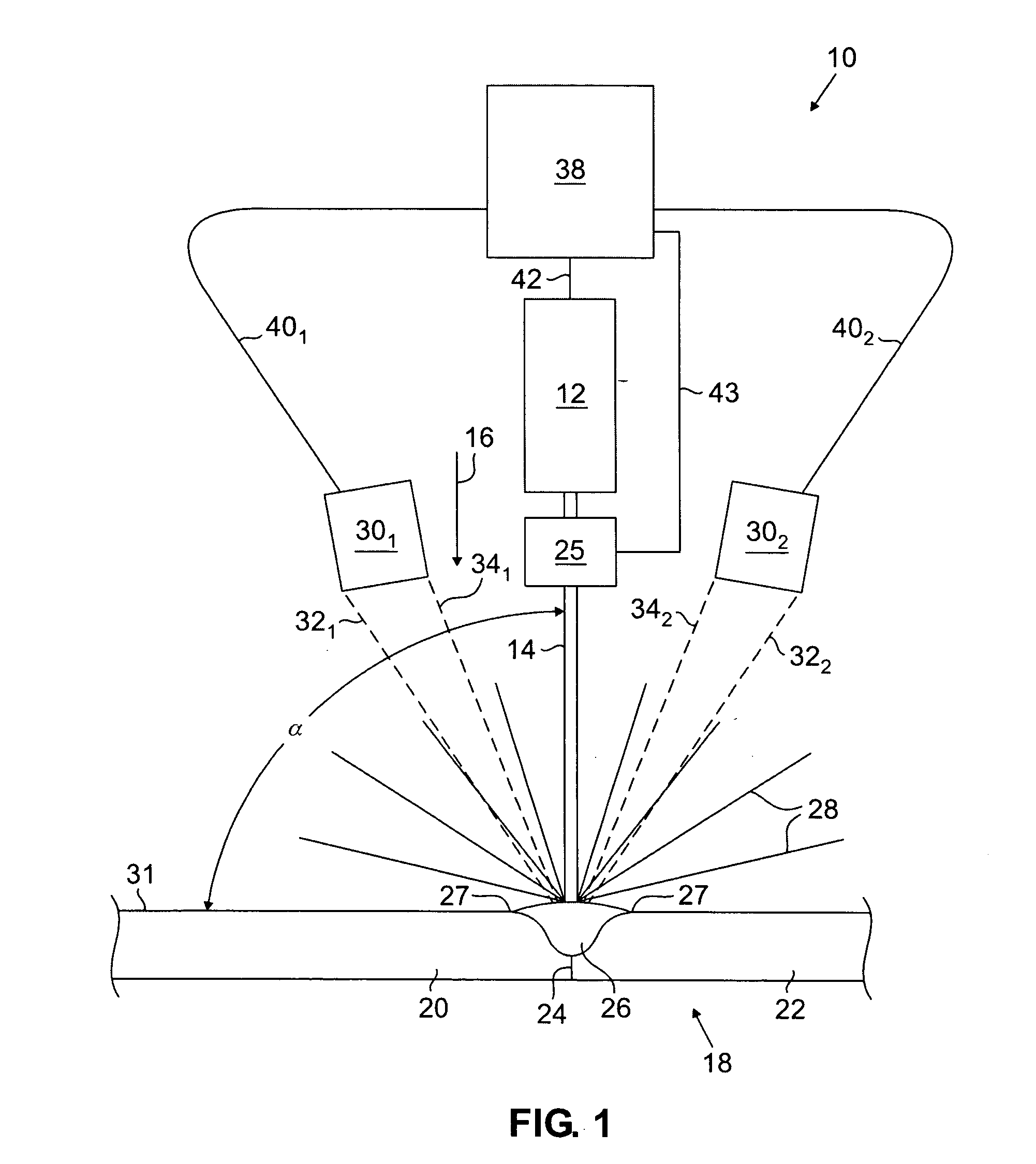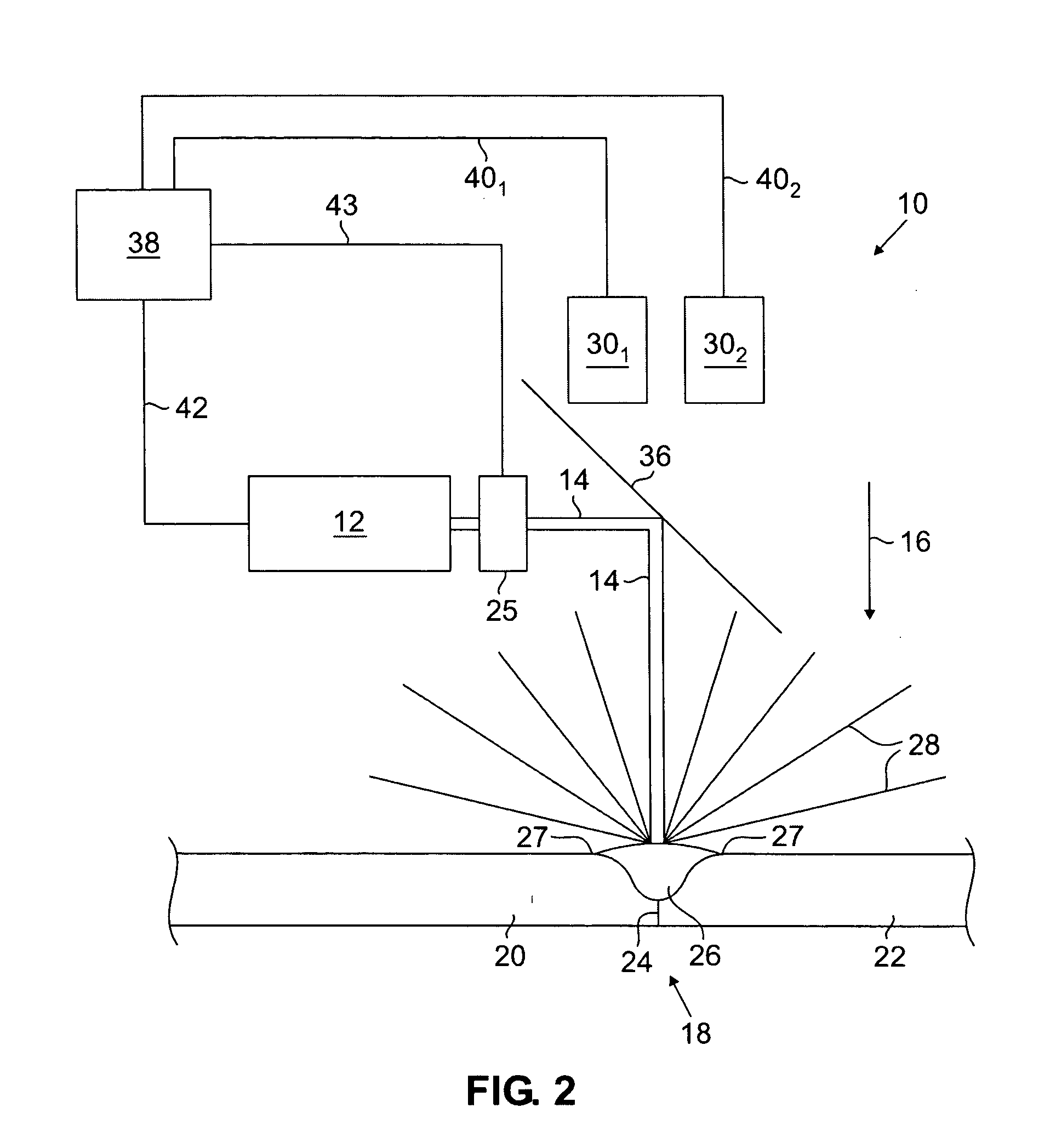Method and apparatus for controlling and adjusting the intensity profile of a laser beam employed in a laser welder for welding polymeric and metallic components
a laser beam and laser welder technology, applied in the direction of mechanical control devices, controlling lamination, process and machine control, etc., can solve the problems of undesirable variation of the properties of the bonded region, and achieve the effect of improving the signal-to-noise ratio of the detected infrared radiation
- Summary
- Abstract
- Description
- Claims
- Application Information
AI Technical Summary
Benefits of technology
Problems solved by technology
Method used
Image
Examples
Embodiment Construction
[0046] The embodiments of the present invention described below are not intended to be exhaustive or to limit the invention to the precise forms disclosed in the following detailed description. Rather, the embodiments are chosen and described so that others skilled in the art may appreciate and understand the principles and practices of the present invention.
[0047] The present invention is directed to methods and apparatuses for effectively bonding components of polymeric materials together, and in particular for bonding components of medical devices, such as catheters. Additionally an aspect of the present invention may be used to bond polymeric materials to non-polymeric materials such as metals, for example, stainless steel as well as other non-polymeric materials such as ceramics and glasses. In particular, the present invention can advantageously provide the ability to bond tubular components of polymeric materials together as are usable for making up components of medical cat...
PUM
| Property | Measurement | Unit |
|---|---|---|
| wavelength | aaaaa | aaaaa |
| angle | aaaaa | aaaaa |
| angle | aaaaa | aaaaa |
Abstract
Description
Claims
Application Information
 Login to View More
Login to View More - R&D
- Intellectual Property
- Life Sciences
- Materials
- Tech Scout
- Unparalleled Data Quality
- Higher Quality Content
- 60% Fewer Hallucinations
Browse by: Latest US Patents, China's latest patents, Technical Efficacy Thesaurus, Application Domain, Technology Topic, Popular Technical Reports.
© 2025 PatSnap. All rights reserved.Legal|Privacy policy|Modern Slavery Act Transparency Statement|Sitemap|About US| Contact US: help@patsnap.com



